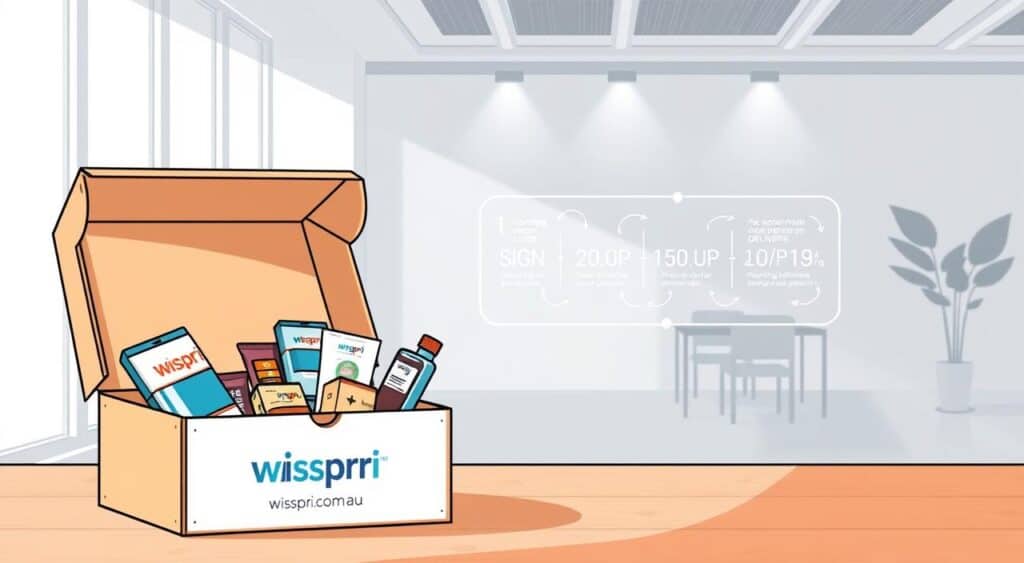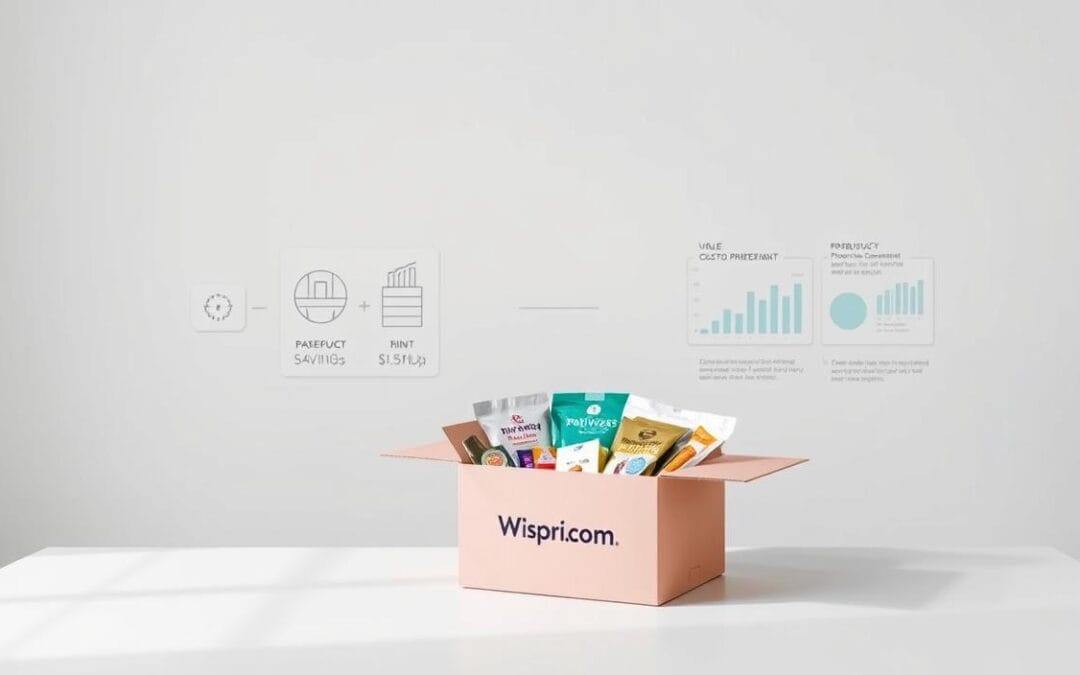Did you know many Aussies lose over $1,200 yearly by missing smart purchase timing? Or that 73% of online “sales” don’t actually discount prices? In today’s world of curated deliveries, it’s easy to get swept up in the thrill of unboxing surprises. But are these services truly worth your hard-earned cash?
The industry has ballooned to a $15 billion global phenomenon, with Aussies embracing the convenience of tailored products arriving monthly. From gourmet snacks to skincare essentials, these services promise personalised experiences. Yet, the real question isn’t just about what’s inside the package – it’s whether the ongoing cost aligns with your lifestyle needs.
Many providers bank on that “Christmas morning” excitement, but savvy shoppers look deeper. You’re not just paying for products – you’re investing in curation, delivery logistics, and brand partnerships. Local and international options flood the market, making it crucial to compare long-term benefits against recurring charges.
Key Takeaways
- Globally popular services often hide shipping costs that impact overall value
- Personalisation features vary widely between providers
- Regularly review whether contents still match your preferences
- Compare per-item costs against retail prices for transparency
- Look for flexible cancellation policies to avoid lock-in traps
Understanding the Subscription Box Revenue Model
Have you ever wondered how companies keep those monthly deliveries affordable while turning a profit? The secret lies in predictable income streams. Most providers use a product kitting approach, bundling items into themed packages that arrive like clockwork. McKinsey & Company reports this method drives 87% of industry revenue, creating a win-win for businesses and subscribers.

Exploring the Subscription Box Concept
Think of these services as your personal shopping assistant. They source items matching your interests, whether you need essentials replenished monthly or enjoy quarterly surprises. Popular options like Dollar Shave Club thrive by solving a simple problem: delivering razors before you realise you’re running low.
| Model Type | Focus | Customer Retention | Examples |
|---|---|---|---|
| Replenishment | Essential items | High (needs-based) | Pet food, toiletries |
| Curation | Discovery & experience | Moderate (novelty-driven) | Beauty samples, gourmet snacks |
How Curated Product Selection Drives Engagement
Providers invest heavily in understanding what makes you tick. BarkBox excels here, tailoring dog toys to your pup’s size and chewing habits. This personal touch transforms routine deliveries into anticipated events – 68% of members stay subscribed for the thrill of discovery.
Successful companies balance practical needs with delightful extras. They might pair your regular coffee supply with limited-edition mugs or recipe cards. This strategy builds emotional connections, making cancellations feel like breaking up with a friend who really gets you.
Demystifying Pricing Metrics and Strategies
Ever felt curious why some monthly services cost $25 while others hit $80? Behind every price tag lies a carefully calculated formula. Companies balance four key numbers to stay profitable while keeping you interested.

Calculating Customer Acquisition Cost and Churn Rate
Your sign-up doesn’t come cheap. Brands spend $36.36 on average to acquire each customer through ads and promotions. If they spend $1,200 monthly and gain 33 new members, that’s your acquisition cost baked into pricing.
Churn rate shows how many cancel monthly. A 10% rate means members stick around 10 months on average. Companies must recover their marketing investment before you leave – which explains why longer commitments often mean better deals.
Evaluating Customer Lifetime Value and Profit Margins
Your total worth to companies? Divide 1 by the churn rate. With 8% monthly cancellations, your lifetime value equals 12.5 months of payments. Smart operators keep acquisition costs below 35% of this figure.
| Metric | Calculation | Industry Average |
|---|---|---|
| Acquisition Cost | Marketing Spend ÷ New Customers | $25-$45 |
| Churn Rate | Cancellations ÷ Total Subscribers | 5-15% monthly |
| Lifetime Value | 1 ÷ Churn Rate | 7-20 months |
| Profit Margin | (Price – Costs) ÷ Price | 40-60% |
These numbers explain why your $50 box contains $20-$30 worth of products. Higher margins let companies survive when members cancel. Next time you see a price hike, check if they’re struggling with churn or acquisition costs!
Unlocking Subscription Box Value with Strategic Pricing
What if your monthly deliveries could adapt to your budget like a personal shopper? Savvy Aussies now decode pricing strategies to maximise returns from recurring services. Four distinct price brackets shape the market, each offering different perks and trade-offs.
Defining Value in Your Business Model
Companies structure offerings based on what you’ll tolerate paying monthly. Low-cost plans ($1-$15) work for sampling new products, while premium tiers ($50+) deliver rare finds. The sweet spot? Mid-range options ($16-$25) blending full-sized items with discovery elements.
Leveraging Tiered and Adjustable Models
Smart providers use stair-step pricing to match various wallets. You might start with basic access, then upgrade for exclusive perks. Some services adjust rates quarterly based on supply costs or member numbers – always check terms for automatic increases.
| Price Range | Key Features | Best For | Examples |
|---|---|---|---|
| $1-$15 | Sample sizes, basic essentials | Brand explorers | Birchbox, Who Gives A Crap |
| $16-$25 | Full-size premium items | Regular users | BarkBox, Frankie Magazine |
| $26-$50 | Artisan/niche products | Connoisseurs | Winc wine, The Memo |
| $50+ | Luxury/limited editions | Splurgers | Margot McKinney, Mister Weekly |
Case Examples to Inform Your Price Setting
ThredUp’s clothing service demonstrates hybrid pricing done right. Their $10/month fee unlocks discounted purchases, blending recurring revenue with à la carte spending. This model keeps budgets flexible while encouraging regular engagement.
Local success stories like Marley Spoon show tiered meal kits work. Their family plan costs 23% less per serving than solo options, rewarding commitment. Always compare per-item costs against supermarket prices to spot true savings.
Harnessing Technology and Wispri for Smarter Price Tracking
Smart shoppers now use digital tools to cut through marketing hype. Platforms like Wispri let you track product prices across retailers, turning guesswork into data-driven decisions. This approach helps determine if recurring deliveries truly save money or simply deliver convenience.
![]()
Introducing Wispri: Australia’s Leading Price Tracking Platform
Wispri monitors over 50 Australian stores, from JB Hi-Fi to Bunnings. Its AI scans prices daily, showing historical trends to spot genuine deals. The free version sends alerts when items drop below your target price, while Wispri PRO offers bulk monitoring for power users.
Utilising AI-Powered Price Monitoring for Real-Time Alerts
The system learns your preferences, flagging when products from your monthly deliveries appear cheaper elsewhere. One user saved $217 on skincare items by pausing their service during a Harvey Norman sale. Alerts arrive via email or app notifications within minutes of price changes.
| Feature | Wispri | Manual Tracking | Retailers Covered |
|---|---|---|---|
| Price History | 180-day records | None | All major AU stores |
| Alerts | Instant notifications | Bookmark checks | Amazon AU, eBay |
| Time Saved | 4+ hours monthly | Ongoing effort | Officeworks, Bunnings |
Avoiding Fake Sales with Historical Price Data
Many services inflate “discounted” prices during peak seasons. Wispri’s 6-month price graphs exposed a popular snack box claiming 40% savings – actual retail prices were 12% lower year-round. Cross-checking takes seconds through their dashboard.
Combining curated deliveries with price tracking ensures you enjoy convenience without overspending. As one Melbourne user noted: “I kept my coffee service but dropped the beauty box after Wispri showed I could save $31 monthly”. Tools like these put control back in your hands.
Optimising Your Subscription Box Service for Growth
What separates fleeting fads from lasting services? Top performers combine smart data use with seamless delivery systems. Savvy operators treat every package as both a product shipment and marketing opportunity.
Using Data to Drive Customer Acquisition and Retention
Leading companies track what keeps members engaged long-term. They analyse patterns like how often you skip months or which items prompt cancellations. One Sydney-based beauty service reduced churn by 18% after adjusting products based on feedback surveys.
Key metrics reveal hidden opportunities. Services monitoring lifetime value often offer personalised discounts before cancellation windows. Look for providers that adapt offerings quarterly – it signals they’re using your data to improve value.
| Data-Driven Approach | Traditional Approach | Customer Impact |
|---|---|---|
| Monthly preference surveys | Static product selection | 23% higher satisfaction |
| Dynamic pricing models | Fixed monthly rates | 17% better retention |
| Real-time feedback loops | Annual reviews | 41% faster improvements |
Integrating Fulfillment Strategies with Marketing Efforts
Your unboxing experience doubles as brand advertising. Smart services include Instagram-ready packaging with branded tissue paper or custom stickers. These touches cost less than $0.80 per box but generate 3x more social shares.
Outsourcing logistics fulfillment lets companies focus on what matters. When a Melbourne snack startup partnered with a national distributor, delivery errors dropped 62%. You benefit through reliable arrivals and better-curated products.
Watch for these signs of operational excellence:
- Consistent monthly delivery dates (±2 days)
- Recyclable or reusable packaging materials
- Personalised notes addressing you by name
Brands mastering this balance – like a popular Aussie book service using local illustrators for box art – see 89% of members renew annually. Their secret? Making every delivery feel specially crafted, not mass-produced.
Conclusion
You’ve now got the tools to cut through the hype surrounding curated deliveries. The industry’s growth stems from our love for tailored experiences, but smart choices require peeking behind the curtain. Remember, companies thrive on predictable income – your job is ensuring this arrangement works both ways.
Ask yourself: Do monthly arrivals still spark joy? Could you buy equivalent items cheaper locally? Tools like price trackers help separate genuine savings from clever marketing. One Sydney family saved $480/year by switching their snack service after comparing per-item costs at Coles.
Three quick checks keep your spending sharp:
• Review contents against retail prices quarterly
• Monitor delivery consistency and personalisation
• Calculate annual totals versus à la carte options
Successful business models balance convenience with fair pricing. If your provider won’t share cost breakdowns or locks you into rigid plans, consider alternatives. Flexibility matters – quality services adapt as your needs change.
Ultimately, recurring deliveries should simplify life, not drain resources. With these insights, you’re equipped to make decisions that align with both your lifestyle and budget. What’ll arrive on your doorstep next month – genuine value or just another charge?
FAQ
How do curated product selections improve customer engagement?
Curated selections create a personalised experience, making customers feel understood. By aligning products with their preferences or needs, you build trust and excitement, encouraging repeat purchases and loyalty.
What’s the most effective way to calculate customer acquisition cost?
Divide your total marketing and sales expenses by the number of new customers gained in a specific period. For example, if you spend
FAQ
How do curated product selections improve customer engagement?
Curated selections create a personalised experience, making customers feel understood. By aligning products with their preferences or needs, you build trust and excitement, encouraging repeat purchases and loyalty.
What’s the most effective way to calculate customer acquisition cost?
Divide your total marketing and sales expenses by the number of new customers gained in a specific period. For example, if you spend $1,000 on ads and acquire 50 customers, your cost per acquisition is $20.
Why is tiered pricing important for a subscription service?
Tiered pricing lets you cater to different budgets and needs, widening your audience. Offering basic, premium, or custom tiers encourages upgrades and reduces churn by giving customers flexibility as their requirements change.
How can Wispri’s price tracking tools benefit my business?
Wispri uses AI to monitor competitors’ pricing in real time, alerting you to changes. This helps you avoid underpricing during sales or missing trends, ensuring your rates stay competitive without sacrificing margins.
What role does fulfilment play in customer retention?
Smooth fulfilment builds reliability. Pairing timely deliveries with eco-friendly packaging or surprise freebies enhances satisfaction. Linking these efforts to marketing (e.g., unboxing videos) boosts word-of-mouth referrals.
How do I balance profit margins with affordable pricing?
Analyse your costs (products, shipping, overheads) and customer lifetime value. Test adjustable pricing models—like seasonal discounts or add-ons—to maintain profitability while offering perceived value through exclusivity or convenience.
Can historical price data really help avoid fake sales?
Yes. Platforms like Wispri track long-term pricing trends, showing if a competitor’s “discount” is genuine. This prevents you from rushing into price wars based on misleading promotions, protecting your brand’s credibility.
,000 on ads and acquire 50 customers, your cost per acquisition is .
Why is tiered pricing important for a subscription service?
Tiered pricing lets you cater to different budgets and needs, widening your audience. Offering basic, premium, or custom tiers encourages upgrades and reduces churn by giving customers flexibility as their requirements change.
How can Wispri’s price tracking tools benefit my business?
Wispri uses AI to monitor competitors’ pricing in real time, alerting you to changes. This helps you avoid underpricing during sales or missing trends, ensuring your rates stay competitive without sacrificing margins.
What role does fulfilment play in customer retention?
Smooth fulfilment builds reliability. Pairing timely deliveries with eco-friendly packaging or surprise freebies enhances satisfaction. Linking these efforts to marketing (e.g., unboxing videos) boosts word-of-mouth referrals.
How do I balance profit margins with affordable pricing?
Analyse your costs (products, shipping, overheads) and customer lifetime value. Test adjustable pricing models—like seasonal discounts or add-ons—to maintain profitability while offering perceived value through exclusivity or convenience.
Can historical price data really help avoid fake sales?
Yes. Platforms like Wispri track long-term pricing trends, showing if a competitor’s “discount” is genuine. This prevents you from rushing into price wars based on misleading promotions, protecting your brand’s credibility.

